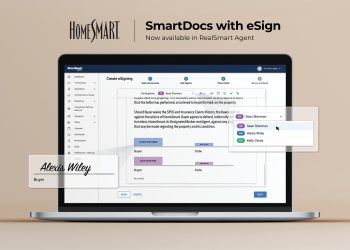August home sales dropped 3.5% from July’s total—and the median sale price slipped 1.2% to $335,000—as seasonal norms signaled that 2021’s busiest home-buying and selling months are probably behind us. Despite these drops, August still almost broke records for home sales signaling a still-hot market.
August’s low number of days on market (24) and meager months supply of inventory (1.3) reversed two months of inventory gains as strong demand amid tight inventory conditions persisted.
“The slight seasonal decline in home sales from July to August was countered by this being the second-highest August sales total in the 13-year history of our report. So, although we appear to be past the blistering summer peak, the market is still very active,” said Nick Bailey, president, RE/MAX, LLC, in a statement. “In fact, the drop in home prices might signal to potential sellers that it’s time to get off the fence in case they fall further, which in turn could draw more buyers back into the mix. In any case, it seems likely that the combination of super-quick sales and a severe lack of inventory will be with us for the foreseeable future.”
With year-over-year comparisons skewed by the pandemic, July-to-August averages for 2015-2019 illustrate what’s typical in late summer:
The month-over-month decline of 1.2% in August’s median sales price compares with the 2015-2019 average July-to-August drop of 1.0%. YoY, the median sales price is up 13.2%.
The 6.2% month-over-month drop in active inventory was nearly double the 2015-2019 average July-to-August decline of 3.3%. Inventory is down 26.7% year-over-year.
Home sales dropped 3.5% from July, compared to the 2015-2019 average decline of 2.1%. However, August home sales were one of the largest totals of any month in the 13-year history of the report and the second-largest for the month and year-over-year, sales were up 0.6%.
August’s average days on market of 24 was one day more than July and reflected sales that were 18 days faster, on average, than in August 2020. The months supply of inventory in August of 1.3 declined from July’s 1.5 and was significantly less than August 2020’s 1.9 months supply.
Highlights and the local markets leading various metrics for August include:
Closed Transactions
Of the 51 metro areas surveyed in August 2021, the overall average number of home sales is down 3.5% compared to July 2021, and up 0.6% compared to August 2020. Leading the year-over-year sales percentage increase were New York, New York, at +55.1%, Honolulu, Hawaii, at +37.3%, and Las Vegas, Nevada, at +12.5%.
Median Sales Price – Median of 51 Metro Median Prices
In August 2021, the median of all 51 metro median sales prices was $335,000, down 1.2% compared to July 2021, and up 13.2% from August 2020. No metro areas saw a year-over-year decrease in median sales price. Thirty-six metro areas increased year-over-year by double-digit percentages, led by Boise, Idaho, at +30.6%, Phoenix, Arizona, at +24.9%, and Salt Lake City, Utah, at +22.3%.
Days on Market – Average of 51 Metro Areas
The average days on market for homes sold in August 2021 was 24, up one day from the average in July 2021, and down 18 days from the average in August 2020. The metro areas with the lowest days on market were a two-way tie between Cincinnati, Ohio, and Nashville, Tennessee, at 10, and Omaha, Nebraska, at 13. The highest days on market averages were in Des Moines, Iowa, at 83, Miami, Florida, at 67, and New York, New York, at 57. Days on market is the number of days between when a home is first listed in an MLS and a sales contract is signed.
Months Supply of Inventory – Average of 51 Metro Areas
The number of homes for sale in August 2021 was down 6.2% from July 2021 and down 26.7% from August 2020. Based on the rate of home sales in August 2021, the months supply of inventory decreased to 1.3 compared to 1.5 in July 2021, and decreased compared to 1.9 in August 2020. A six months supply indicates a market balanced equally between buyers and sellers. In August 2021, of the 51 metro areas surveyed, zero metro areas reported a months supply at or over six. The markets with the lowest months supply of inventory included a five-way tie among Albuquerque, New Mexico; Raleigh-Durham, North Carolina; Seattle, Washington; Denver, Colorado; and Charlotte, North Carolina at 0.6.
For more information, please visit www.remax.com.











